Wingspan 12 m Retired 1 May 1991 First flight August 8, 1986 | Length 17 m | |
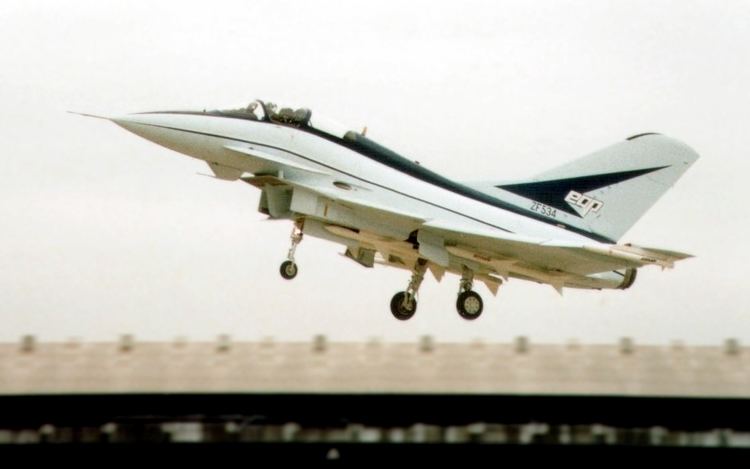 | ||
British aerospace eap versus ef2000
The British Aerospace EAP (for Experimental Aircraft Programme) was a technology demonstrator aircraft developed as a private venture in the 1980s and which eventually formed the basis for the Eurofighter Typhoon.
Contents
- British aerospace eap versus ef2000
- History
- Departing Loughborough University
- Specifications EAP
- References
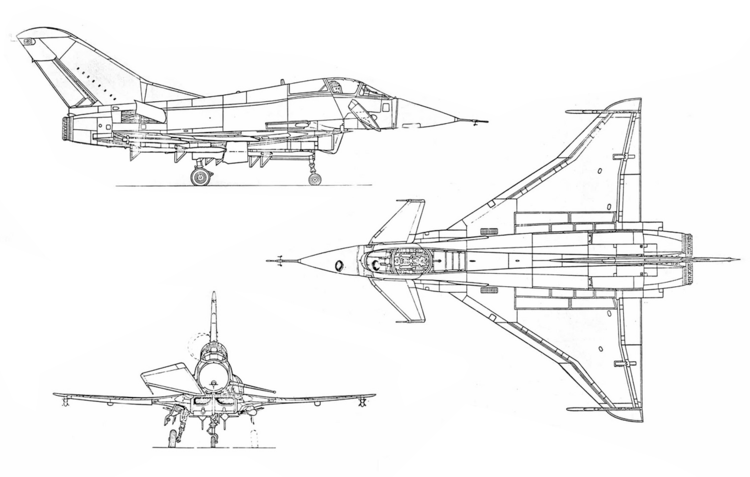
History
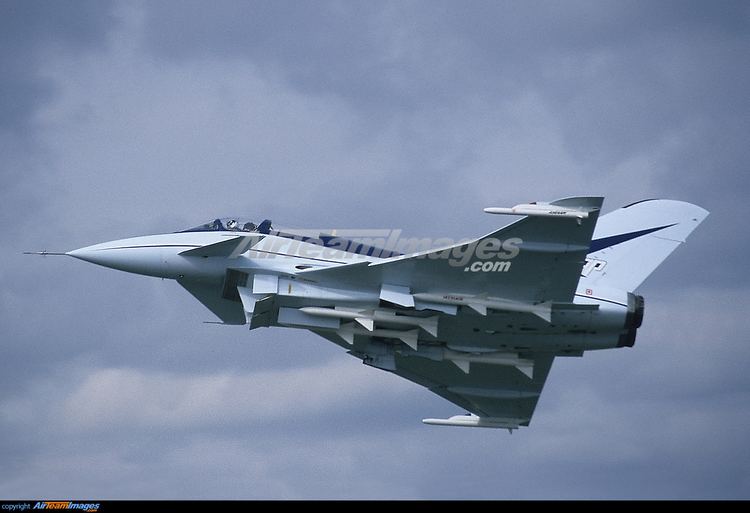
In 1982, British Aerospace (BAe) exhibited a mockup of the Agile Combat Aircraft (ACA) at the Farnborough Airshow as well as the Paris Air Show in May 1983. The ACA combined several years of private venture research by BAe, costing around £25 million, with similar studies done by MBB (in the TKF-90 project) and Aeritalia. Plans were made by the three companies to produce two technology demonstrator aircraft based on ACA under the name "Experimental Aircraft Programme".
The British Government announced it would make a financial contribution to the EAP but a lack of funding from the West German government meant that the planned second airframe was cancelled. The sole EAP aircraft (serial ZF534) first flew on 8 August 1986. The UK Ministry of Defence invested almost £80m in the EAP.
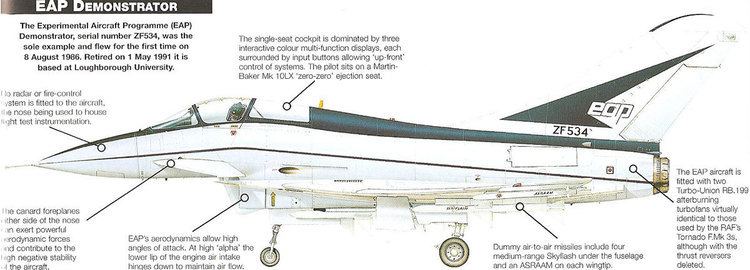
The EAP aircraft was built within the development facility (No. 2 Hangar) at British Aerospace, Warton; and comprised three major fuselage structures; front, centre & rear. The front fuselage contained many innovative structures in Carbon-fiber-reinforced polymer composites and aluminium-lithium alloy. The centre and rear fuselage structures were conventional, with a modified Tornado fin. The right hand wing assembly, manufactured at the Samlesbury plant of BAe, was a co-bonded carbon fibre composite assembly proving new tooling and manufacturing techniques which were put to good use later on the Eurofighter programme. The left hand wing assembly was manufactured at the Corso Marche facility of Alenia in Turin. The foreplanes were manufactured in carbon composite at Preston/Samlesbury; detail design and manufacture of the windscreen and canopy assemblies was by Aerostructures Hamble, Southampton.
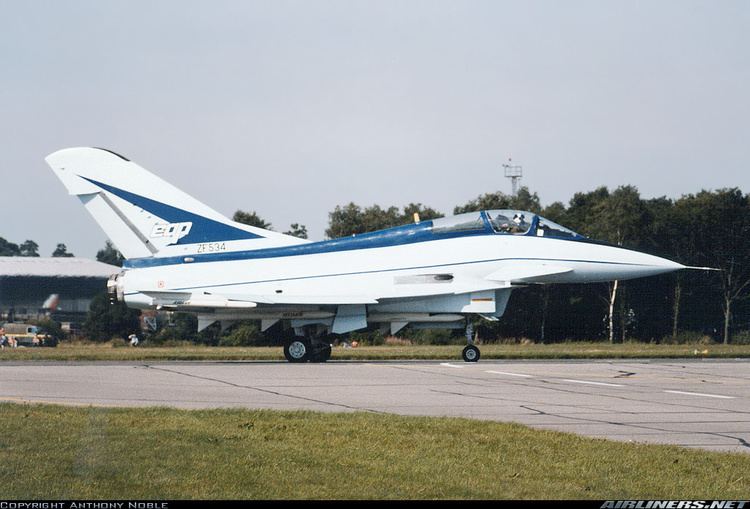
The Experimental Aircraft Programme was designed to research technologies to be used for a future European combat aircraft. The EAP was fitted with a variety of advanced electronic equipment, including three CRT displays and a HUD similar to the F-16's. A pair of Turbo-Union RB199-104 afterburning turbofans, powerplant of the Panavia Tornado ADV provided power. The tailfin of a Tornado was used as the basis of the unit fitted the EAP in order to reduce cost.
The initial definition of what became the Eurofighter project started soon after the EAP project was initiated. Without the research input from ACA and EAP, the Eurofighter would not have been possible. While the similarity between the EAP and the Eurofighter/Typhoon is striking there are some important differences; the cranked delta wings of the EAP have been replaced with a straight delta, the size of the fin has been much reduced and the rectangular intake of the prototype has been replaced with one with a "smiling" configuration.
The EAP aircraft was retired from service on 1 May 1991, and was located in the display area of the Aeronautical and Automotive Engineering department of Loughborough University. It was used to show the Aeronautical Engineering students the components of a fighter jet. Its port wing had been removed at the root to show both the aerofoil cross-section and some of the internal components. Several other components have been removed from the aircraft for the purpose of viewing.
Departing Loughborough University
On 26 March 2012 the EAP left the Aeronautical & Automotive Engineering Department at Loughborough University following the RAF's request to have it displayed at the Royal Air Force Museum Cosford. The AAE department at Loughborough received a BAE Hawk 200 during March 2012 to replace the EAP as a teaching and research aid.
Specifications (EAP)
Data from Jane's All The World's Aircraft 1988–89
General characteristics
Performance
